Cost-Efficient 6G Radio Access Network
for Internet-of-Everything
Objective:
The fourth industrial revolution is accelerating a wave of digital transformation across industries through the deployment of digital twins, high-fidelity virtual replicas of both physical systems and abstract entities. These models provide transformative capabilities, from reducing operational inefficiencies in manufacturing to optimizing infrastructure maintenance in sectors like water distribution and energy. However, to function at scale, digital twins require real-time, bidirectional data exchange between vast networks of IoE devices and cloud-hosted digital shadows, placing significant demands on the underlying communication infrastructure.
In this context, the project tackles the core challenge of sustaining massive connectivity. Recognizing the limited capabilities of many IoE devices, the approach prioritizes resource allocation strategies that minimize the volume of data exchanged with digital counterparts, optimize radio resource utilization, and enable scalable, distributed network management.
The project focuses on building an NG-RAN that is both intelligent and spectrum-efficient. Rather than reshaping the network architecture, the project emphasizes the integration of distributed intelligence, development of massive access strategies under limited spectral resources, and distributed/autonomous control. The project also explores how to minimize communication between IoE devices and their digital twins, thereby improving energy and bandwidth efficiency.
The proposed solution follows three phases:
- Advance the state of the arts pertains mmWave for mobile devices.
- Enhancing spectrum utilization to support massive connectivity
- Integrating distributed intelligence at the network for cost-effective and automated NG-RAN operations. This approach aims to create a scalable, low-cost, and intelligent 6G RAN, ensuring widespread and affordable connectivity.
Role
Supervising Graduate students
Outcomes
- Overcome the phase noise and short channel coherence time
 Experimental validation
Experimental validation
- The design of a new architecture that relies on redundant links to overcome link interruption for mmWave mobile devices
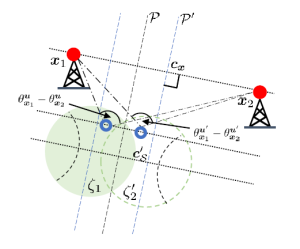
- The derivation of the theoretical boundary of the Task-Oriented-Communication for massive connectivity
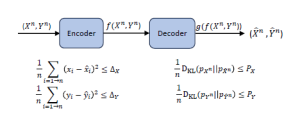
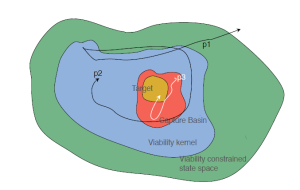
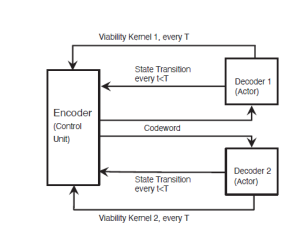
- The management of distributed NG-RANs
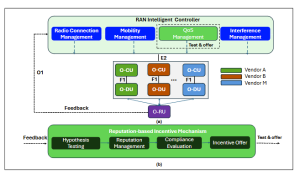
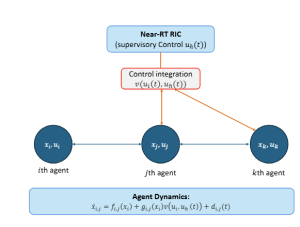
Publications:
[A] M. Chraiti and O. Ercetin, “On the Space/Time Correlation of mmWave AoAs: Concept and Experimental Validation,” in Proc. IEEE WCNC, 2024.
[B] M. Chraiti and O. Ercetin, “On the Efficacy of Fingerprint-Based mmWave Beamforming in NLOS Environments: Experimental Validation,” in Proc. IEEE EUCNC 6G Summit, 2024.
[C] B. Bozkurt, M. Chraiti and O. Ercetin,” Statistical mmWave Beam Codebook Refinement in Highly NLoS Environment with Real-World Measurements Validation” to be submitted to IEEE Trans. Signal Process. 2025.
[D] M. Chraiti, O. Ercetin and A. Ghrayeb, “Location-Shift Keying for Resilient mmWave Communications Against Phase Noise and Short Channel Coherence Time,” to be submitted to IEEE Trans. on Comm. 2025.
[E] M. Chraiti and O. Ercetin,” Perceptual Lossy Compression for Correlated Two-Users Broadcast Channel” to be submitted to IEEE Trans. on Comm. 2025.
[F] M. Chraiti and O. Ercetin, “Perceptual Lossy Compression for Two Correlated Gaussian Sources,” submitted to IEEE Comm. Letter, 2025.
[G] Ercetin, O., Chraiti, M., and Erciyes Karakaya, R., “Consolidate Viability and Information Theories for Task-Oriented Communications: A Homeostasis Solution”, arXiv.2311.14917,2023. [Online]. Available: https://arxiv.org/abs/2311.14917
[H] O. Ercetin, M. Chraiti and R. E. Karakay, “Consolidate Viability and Information Theories for Task-Oriented Communications: The Case of Remote Power Plants,” in Proc. IEEE EUCNC 6G Summit, 2024.
[I] B. Bozkurt, M. Chraiti and O. Ercetin” Overcomimg the mmWave Short Coherence time: On the Optimal Placement of Antennas” to be submitted to IEEE Trans. Wireless Comm. 2024.
[K] B. Bozkurt, A. M. Aktas, H. A. Gunel, M. Chraiti, I. Hokelek, and A. Gorcin “Large Beam Codebook Size for MmWave Beam-Steering : How Much is Enough?” Submitted to IEEE Trans. On Comm.
[M] S. Jorjani, M. Chraiti and O. Ercetin,” A Fair Comparison Between OMA and Power Domain NOMA Considering Channel Training Overhead” Manuscript under preparation.
[N] M. Saimler, M. Chraiti, and O. Ercetin,” Energy-Constrained Handover Optimization for Densely Deployed CRAN” To be submitted soon to IEEE Trans. Veh. Tech.
[O] K. Ibrahim, and M. Chraiti” Reinforcing Zero-Trust Security from a Task Compliance Perspective for ORAN system” in Proc. WCNC, 2025.
[J] B. Bozkurt, A. M. Aktas, H. A. Gunel, M. Chraiti, I. Hokelek, and A. Gorcin” Beam Codebook Refinement for mmWave Devices with Random Orientations: Concept and Experimental Validation” in Proc. WCNC, 2024
[L] A. A. Oznam, M. Chraiti, and K. K. Tokgoz” Bandwidth Expansion in N-fold Frequency Multiplier: N or \sqrt{N} ”. Submitted to IEEE Com. Letter.
Presentations:
P1. Consolidate Viability and Information Theories for Task-Oriented Communications: The Case of Remote Power Plants (EUCNC1-2024)
P2. On the Efficacy of Fingerprint-Based mmWave Beamforming in NLOS Environments: Experimental Validation (EUCN2-2024)
P3. On the Space/Time Correlation of mmWave AoAs: Concept and Experimental Validation (WCNC-2024)
P4. On Advancing mmWave Communications for Mobile Devices (IMDEA-Spain-2024)